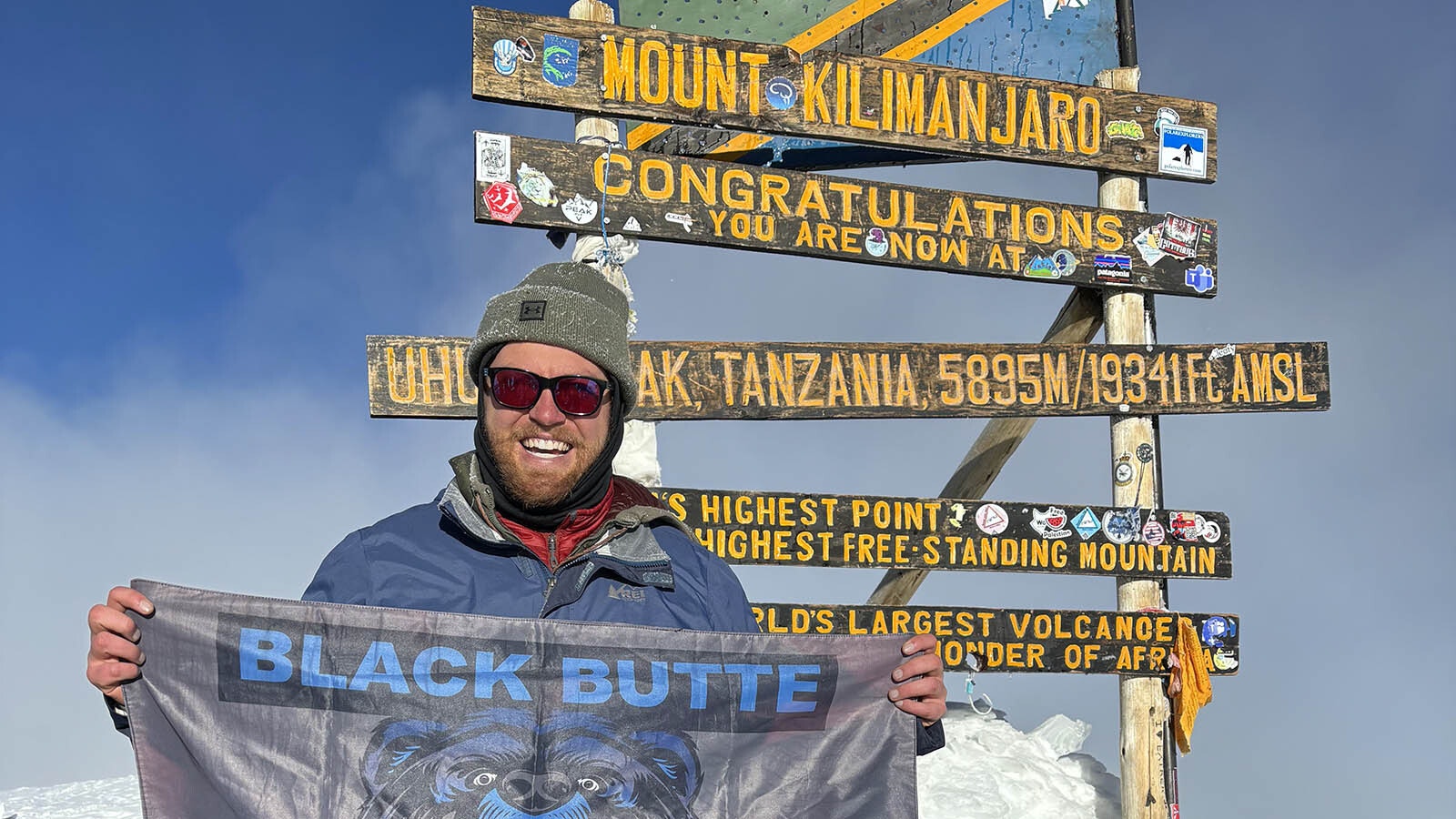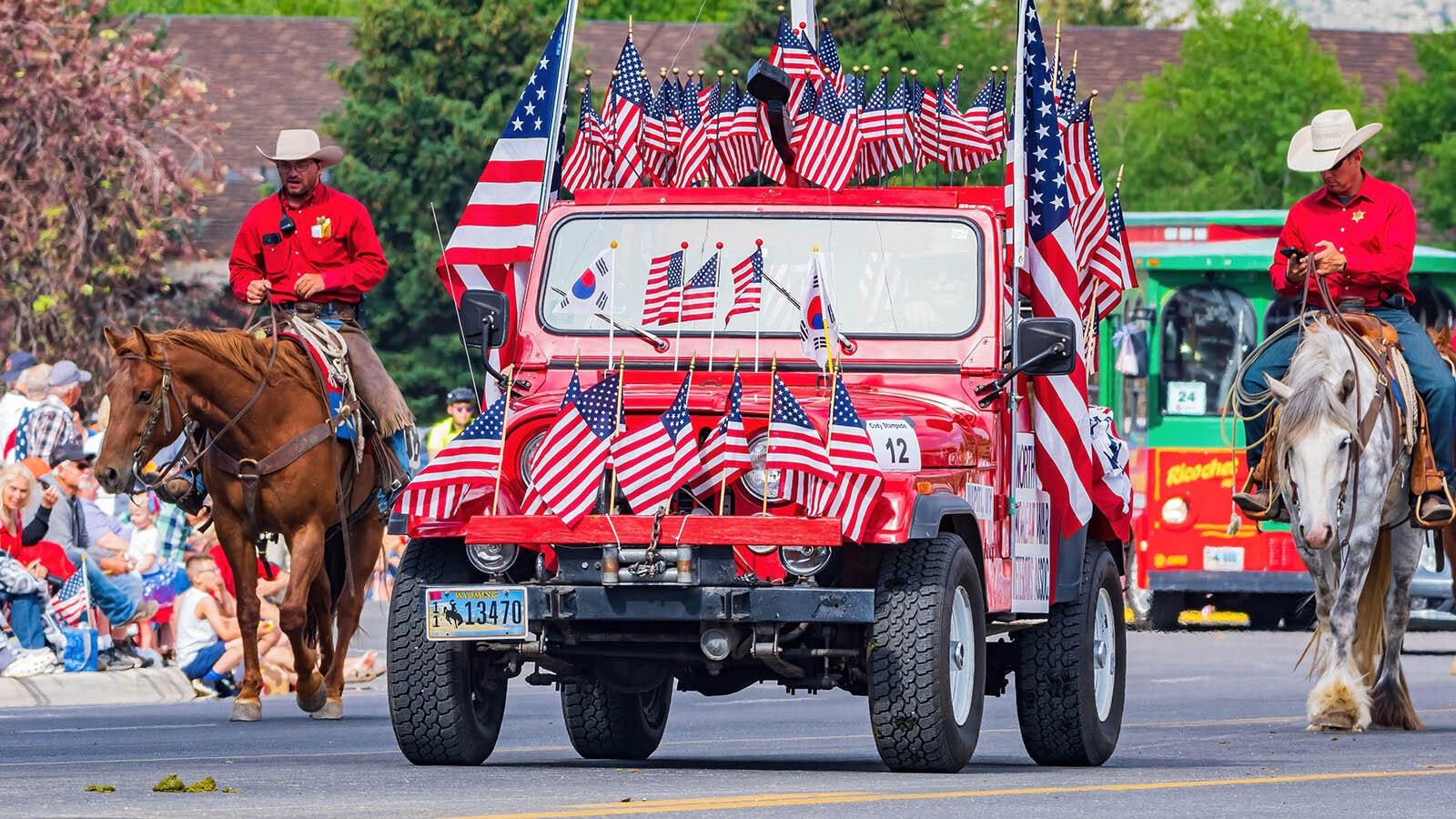Upon first laying eyes on Mount Kilimanjaro, Chris Clifton felt dwarfed by its presence.
The dormant volcano in Tanzania is the tallest peak on the African continent and is the tallest freestanding mountain on the planet. It’s inspiring to behold in photos and video, but no amount of preparation could dull the impact of seeing it for himself.
That’s when this Spanish teacher at Black Butte High School in Rock Springs truly knew he was a long way from home.
Traveling to Tanzania to climb the 19,341-foot peak was an expedition into another world, but nothing compared to the climb itself. Starting at the base at about 2,600 feet in elevation, Clifton set out in a rainforest, then a mountain forest zone, moorlands, alpine desert and finally a full-on Arctic climate for the last few thousand feet.
He reached the top of the world’s fourth tallest peak the day after Christmas, but his journey to achieve this mountain climbing bucket-list achievement started more than a year before.
Go Big Or Go Home
As he ventured deeper into the rainforest at the mountain’s lower elevations, Clifton told Cowboy State Daily his thoughts drifted to his move from the coastal flatlands of Delaware to the rugged landscapes of Wyoming.
Clifton’s hiking experience was limited to just some backpacking until he moved to Rock Springs four years ago. It was two years ago that he actively embraced hiking as a hobby. That’s when at age 27, he embarked on his first big hike on the Cirque of the Towers in the Wind River Range.
He was hooked.
“The first time I went to the Wind River I was like, ‘This is incredible, I want to build my life around seeing and exploring places like this,’” Clifton said. “I love Wyoming so much.”
Dreaming of conquering even greater heights, he fixed his gaze on the summit of Mount Kilimanjaro. It’s the type of go big or go home drive that pushes climbers like Clifton to push his personal boundaries, to test his resilience and perseverance in one of the world's most unique and challenging landscapes.
Clifton said he chose Kilimanjaro because he had previously lived in Central and South America and wanted something different than he could find around home in Wyoming.
“I wanted to expand my horizons by visiting a country where I did not speak the language and would be tested physically and mentally,” Clifton said. “I had dreamed of climbing Kilimanjaro since I was a teenager. So, once I researched the variety of ecosystems and the summit experience, I decided to go.”
Teeming With Life
Clifton said he trained and prepared for his Kilimanjaro attempt for a year.
He conditioned himself on the Stairmaster at the gym to build endurance and stamina. Additionally, he tackled hiking nearby White Mountain regularly last summer and fall.
“I also climbed some peaks in Colorado just to see how I felt at that altitude,” he said.
Those climbs provided essential aerobic exercise, strengthening his lower body, lungs and heart for the demanding journey ahead.
And finally, he packed his bags in December finally as ready as he was going to be to begin the adventure of a lifetime.
Accompanying him on the hike were 11 other climbers. Together, they navigated through the tangled undergrowth and winding trails that crisscrossed the forest floor.
At the base of Mount Kilimanjaro, Clifton said he found himself enveloped by the vibrant foliage of the rainforest.
Trees towered overhead, their branches forming a natural canopy that filtered the sunlight into a mosaic of russet, gold, and amber hues on the forest floor. Weathered and rough bark bore the scars of the seasons.
Exotic birds darted among the lush foliage, their brilliant feathers shimmering against the greenery. Colorful butterflies flittered gracefully through the air, adding an elegant charm to the vibrant surroundings.
And with each step he took, Clifton said the forest floor released a subtle earthy scent, reminiscent of damp soil after a gentle rain and the fragrance of new leaves and blossoms.
It was a magical realm teeming with life and beauty in every direction.
“The rainforest had monkeys and it was just beautiful there,” Clifton said. “It was so amazing.”
Above The Clouds
As the group ascended and left the rainforest below, they entered the montane forest zone. Here, the trees become shorter and more stunted, a stark contrast to the towering giants the group left behind. The landscape was dotted with moss-covered rocks while ferns flourish amid the dense vegetation.
The air was crisp and refreshing in this area, a welcome change from the humidity of the rainforest below.
The higher the climbers ascended, the more the climate changed as the air grew thinner and cooler, and the vegetation changed and thinned, Clifton said. At the subalpine level, grassy plains stretched out before them, interrupted only by clusters of vibrant wildflowers.
With colors reminiscent of the meadows Clifton had explored in Wyoming, he said he felt at home.
“The third day we were above the clouds, so you could see a cloud crashing into the mountain and folding over the contours of the land,” he said. “It was so beautiful, and the sunset and the sunrise were so cool because you could see it above the clouds.”
Myths And Legend
Kilimanjaro is a dormant volcano, and as Africa's highest peak, has been revered for centuries by locals and has captured the imaginations of adventurers and explorers worldwide. It serves as a symbol of Africa's natural beauty, resilience and the enduring spirit of human endeavor.
People have been climbing it for centuries and it’s one of the most popular attractions for serious climbers who go for the “Seven Summits” achievement, climbing the highest peaks of all seven continents on Earth. Casper mountaineer Dr. Joe McGinley has conquered it and only has Mount Everest left for his Seven Summits.
Even so, Kilimanjaro also is shrouded in myth and mystery.
Known as The Roof of Africa, locals historically avoided stepping onto the mountain because it was thought Kilimanjaro was the seat of God and they didn’t want to anger him.
Even today, some still believe there’s less snow on the peak now because God is angry that so many people dare to climb it. Visitors who die attempting the climb it are victims to the wrath of God, they believe.
Perhaps the famous King Kong story found inspiration here, as Indigenous people called Chaggas tell stories of mountain gorillas that once lived in its lower elevation rainforests. There also are myths that tribes of pygmies live in the unexplored ravines and caves of the mountain.
Other historical legends say it was the source of the Nile and the exact source of its name remains unknown, although there are many theories.
And despite Ernest Hemingway’s stirring description of finding a frozen snow leopard at the summit of Kilimanjaro in “The Snows of Kilimanjaro,” there are no leopards of any kind at the to of the peak and he never climbed to the summit.
‘This Is Nothing, I Live In Wyoming’
For Clifton and his climbing party, there was little room for myths and legends as they continued their ascent.
As they climbed higher, the landscape transformed again, this time into the barren slopes of the alpine zone. With temperatures plummeting to a chilling 7 degrees, the frigid air chilled them to the bone.
The barren landscape stretched out before them, devoid of life save for a few hardy shrubs and patches of snow that cling stubbornly to the rocky terrain. (And no snow leopards.)
Despite their layers of insulation, the relentless cold and wind tested their endurance, Clifton said. Yet, he said he joked that even the weather on Mount Kilimanjaro paled in comparison to the biting chill of Wyoming.
“I told them, ‘This is nothing, I live in Wyoming,’” Clifton said. “It was cold and bitter but honestly, the brutal winter we had (in Wyoming) last year was worse.”
With every stride, Clifton drew closer to the summit. As he gazed upward at the towering peak of Kilimanjaro, he described feeling a surge of adrenaline coursing through his veins.
He was ready to conquer this mountain.
During the final push, the group encountered steep switchbacks that snaked their way up the rocky slopes, testing their endurance and determination. As Clifton walked, he said he could feel the strain on his muscles and the burning in his lungs.
But he had trained rigorously for this moment and wasn’t going to go home without reaching his goal with it so close in reach.
“We climbed, like, 2,000 to 3,000 feet a day, and the last day was especially brutal,” Clifton said. “It took us eight hours just to climb that last 1,000 feet to the summit.
“We started hiking on Christmas Day at 11:30 p.m. and reached the summit at around 7:30 in the morning. The last stretch is dark, it’s cold and you can’t see anything and are exposed to the elements. And I kept asking myself, ‘Why am I doing this?’”
The Final Push
The journey up the final part of the mountain was challenging. Five out of the 11 people in Clifton’s group didn’t make it, some of them succumbing to the effects of altitude sickness and other issues. The five made it to the 18,000-foot elevation mark, but couldn’t climb that last 1,000 feet, he said.
“My climbing partners, who included a marathon runner and Army officer, said that climbing Kilimanjaro was the hardest thing they had ever done,” he said. “Thanks to altitude sickness, I arrived at the summit feeling nauseous and completely exhausted.”
As they neared the summit, temperatures plummeted to a bone-chilling negative 15 degrees Celsius. This drastic difference in temperature between the base and the summit underscored the remarkable diversity of climates experienced during the ascent of Mount Kilimanjaro.
Finally, after six grueling days and what felt like an eternity of relentless climbing, the group reached the summit the day after Christmas.
At that point, Clifton said he gazed out at the breathtaking panorama before him in awe. While sick from the elevation change, the moment was still exhilarating.
He could see the snow-capped peak of Kilimanjaro surrounded by glaciers, contrasting with the vast expanse of the African savanna stretching out to the horizon, bathed in golden light of the rising sun.
The soft hues of dawn painted the landscape in subtle shades of pink and orange, casting long shadows over the rugged terrain below. The cool morning air carried the scent of pine and frost, invigorating his senses as he savored the tranquil beauty of the sunrise from the summit.
Moved To Tears
Standing at the top of the world, Clifton said the moment overwhelmed him with emotion as he felt a profound sense of accomplishment.
“To realize you did it is just unexplainable,” Clifton said. “You show up and there’s no guarantee you’re gonna make it and the satisfaction of being on the summit and realizing, ‘I did this really difficult thing that some people dream their whole life of doing and I just did it.’ It was very emotional.”
It wasn't just about reaching the summit; it was about pushing himself beyond his limits, embracing the unknown and finding strength and resilience in the face of adversity.
It was a journey that had tested Clifton in ways he could never have imagined, and one that he will carry with him for the rest of his life.
“Climbing that mountain was the most difficult physical, emotional, mental and even spiritual thing I had ever done,” Clifton said. “I was moved to tears at one point.”
As he descended from the peak and made his way back to civilization, he said he couldn't help but reflect on the incredible experience he had just undergone.
“To climb that summit was a very spiritual experience. I felt very connected to myself because I saw my limit as a person physically, mentally, emotionally and I somehow pushed past it and set a new limit for myself,” he said. “I’ve done some difficult things in my life, but that was by and far the most difficult and the feeling of, ‘Wow, I even astonished myself.’”

















